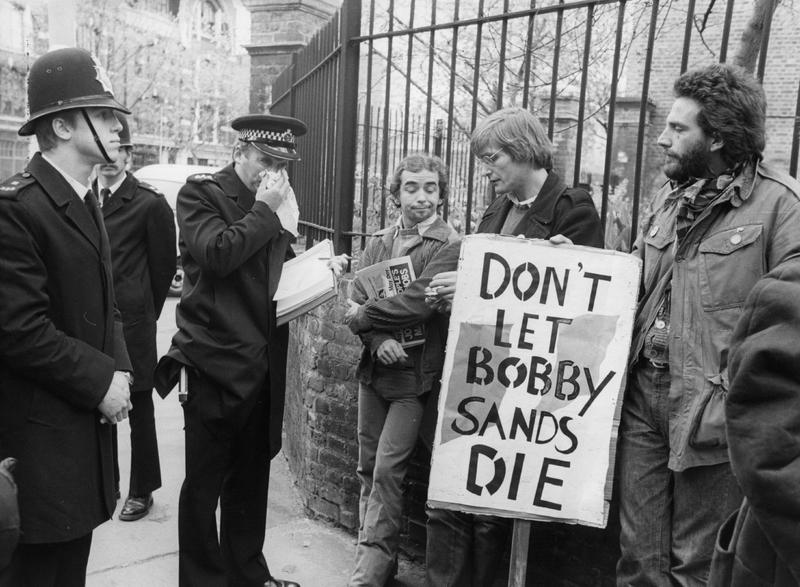The Irish Hunger Strikes Of 1980 And 1981
By | August 24, 2019

In 1981, ten prisoners died of self-imposed starvation at the Maze Prison in Belfast, Northern Ireland. These deaths were the result of a seven-month-long hunger strike protesting the loss of “special category status” which had previously been granted to members of the Irish Republican Army who were considered political prisoners.
The leader of the strike, and also the first to die, was Bobby Sands. Sands had previously been arrested for IRA activities in 1972 and served four years during which he enjoyed the benefits of special category status. These benefits included not having to wear prison clothes and moving freely on prison grounds. In March 1976, the British government enacted a policy designed to criminalize Irish terrorism and, as a result, the special category status was phased out. When Sands was arrested yet again in 1977, having been picked up for gun possession near the scene of an IRA bombing, he was sentenced to fourteen years in Maze Prison where he was treated the same as any other prisoner arrested for violent crimes.

At this time, other prisoners were already engaged in protests against the loss of their status. They began by refusing to do prison work or wear prison clothes, wearing nothing but blankets in what became known as the blanket protest. In March 1978, they took it a disgusting step forward with the dirty protest which involved prisoners defecating in their cells. Despite a concession in October 1980 which would allow them to wear civilian clothing, the prisoners launched the first hunger strike on October 27, 1980.

Sands did not join this first strike, but he did act as the IRA-appointed leader and spokesperson for the prisoners. The strikers had five demands: (1) to be allowed to wear their own clothes; (2) to be exempt from prison work; (3) to be able to freely associate with other prisoners; (4) to have recreational facilities and mail privileges; and (5) to have good-behavior remission restored. The strike was called off on December 18, 1980, after prison authorities made concessions which Sands felt met the prisoners’ demands. However, a second hunger strike was launched on March 1, 1981, after the Secretary of State for Northern Ireland announced that the government would not “recognize that murder and violence are less culpable because they are claimed to be committed for political motives.”

This time, Bobby Sands initiated the strike and was soon joined by twenty other prisoners; however, they decided that only eight would participate at a time and the others could join in after anyone died. The strike got so much publicity that Sands was elected to Parliament in April, but Parliament responded by introducing legislation which disqualified imprisoned convicts from serving. Sands died on May 5 after sixty-six days of consuming only water and salt. Three more prisoners died within the next two weeks. Despite pressure to resolve the issue quickly to avoid further damage to the international reputation of the British government, the strike continued well into the Fall of 1981 and the death toll rose to ten.

The ineffectiveness of the strike eventually led to the prisoners losing the support of the international media and cast doubt on the leadership of the IRA. At the same time, the families of the remaining strikers swore to request medical intervention should the prisoners lose consciousness. As a result, the strike was called off on October 3, 1981. However, it was not a complete failure. While their political status was not officially recognized, the prisoners were granted many of their demands, including the right to wear civilian clothing as well as visitation and mail privileges.

